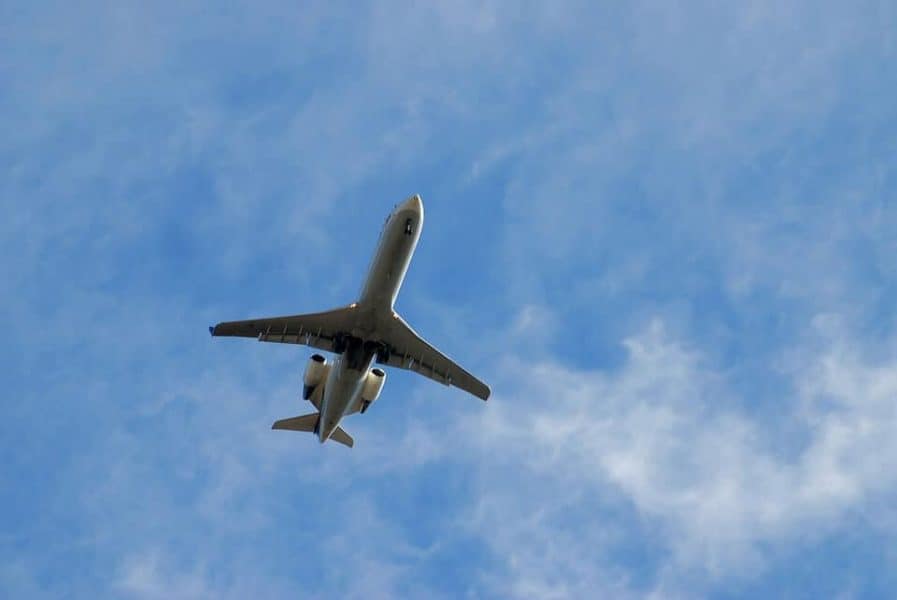Summary: New research suggests establishing ‘green flight paths’ on busy long-haul routes like London to Dubai could accelerate aviation’s transition to sustainable fuels. The approach would target high-volume routes to demonstrate the viability of sustainable aviation fuels (SAF) and encourage large-scale investment in the technology.
Journal: Energy & Environmental Science, October 10, 2024, DOI: 10.1039/D4EE02472A
Reading time: 4 minutes
The path to sustainable air travel might start with the world’s busiest flight routes. Research from Heriot-Watt University and the American University of Sharjah proposes a targeted approach to decarbonizing aviation by establishing green corridors between major global hubs.
Starting with High-Impact Routes
Dubai and London Heathrow airports represent prime candidates for this initiative. They rank first and second globally for CO₂ emissions from international flights and total international passengers. London Heathrow has already shown leadership in this area, working toward incorporating 11% sustainable aviation fuels (SAF) into its overall fuel usage by 2030.
“The UAE and UK are both highly dependent on long-haul flights, so have a compelling opportunity to lead the establishment of green flight paths, to demonstrate and deploy sustainable aviation fuels,” says Professor Steve Griffiths, Vice Chancellor for Research at the American University of Sharjah.
The Technology Behind Green Flight Paths
SAF offers a practical solution for reducing aviation emissions. These non-petroleum-based fuels produce significantly fewer greenhouse gas emissions than traditional jet fuels. Importantly, they’re compatible with existing aviation systems, requiring no modifications to current aircraft engines or infrastructure.
However, current SAF production falls far short of goals, reaching only 0.1% of the 2050 net zero target set by the international community. The researchers identify economic factors as the main barrier, with high production costs and the need for significant investment to scale up manufacturing.
A Matter of Climate Justice
The research highlights an important equity aspect: only about 10% of the world’s population currently takes flights. This means green flight paths would appropriately place responsibility on countries benefiting most from aviation to develop sustainable solutions, which can later be scaled as global air travel demand increases.
Professor John Andresen of Heriot-Watt University explains, “The concept of green flight paths is inspired by green shipping corridors, which are paving the way for net-zero shipping. A similar framework for prioritising long-haul flight segments is becoming increasingly urgent, to drive the global production and use of net-zero SAF technologies.”
Glossary of Terms
- Sustainable Aviation Fuel (SAF): Non-petroleum based fuel that produces fewer greenhouse gas emissions
- Green Flight Path: A designated route between airports using sustainable fuels
- Net Zero: Achieving a balance between greenhouse gas emissions produced and removed from the atmosphere
- Decarbonization: The process of reducing carbon dioxide emissions
Test Your Knowledge
- What percentage of SAF production has been achieved relative to the 2050 net zero goal?
- What percentage of London Heathrow’s fuel usage is targeted to be SAF by 2030?
- What percentage of the world’s population currently takes flights?
- What modification do aircraft engines need to use SAF?
Answers:
- 0.1%
- 11%
- 10%
- None – SAF is compatible with existing engines
Enjoy this story? Get our newsletter! https://scienceblog.substack.com/
If our reporting has informed or inspired you, please consider making a donation. Every contribution, no matter the size, empowers us to continue delivering accurate, engaging, and trustworthy science and medical news. Independent journalism requires time, effort, and resources—your support ensures we can keep uncovering the stories that matter most to you.
Join us in making knowledge accessible and impactful. Thank you for standing with us!

